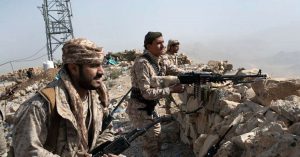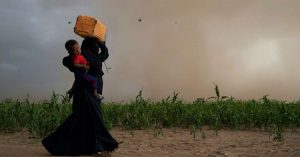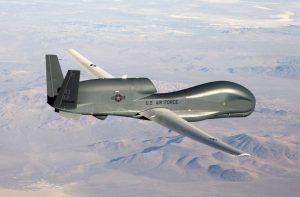JUNE 20, 2019

Iran shot down a United States surveillance drone early Thursday, both nations said, but they differed on the crucial issue of whether the aircraft had violated Iranian airspace, in the latest escalation in tensions that have raised fears of war between the two countries.
Iranian officials said that the drone was over Iran, which the American military denied — an important distinction in determining who was at fault — and each side accused the other of being the aggressor.
Both said the downing occurred at 4:05 a.m. Iranian time on Thursday, or 7:35 p.m. on Wednesday in Washington. The drone “was shot down by an Iranian surface-to-air missile system while operating in international airspace over the Strait of Hormuz,” the United States Central Command said in a statement. “This was an unprovoked attack on a U.S. surveillance asset in international airspace.”
An Iranian attack on an American aircraft — even an unmanned drone — adds another potential flash-point to the growing list of recent clashes between Iran and the United States.
It comes just days after American officials blamed Iran for recent attacks on shipping tankers that also took place near the Strait of Hormuz, the vital waterway for much of the world’s oil, an accusation that Iran has denied. None of the ships that were hit were American-operated.
 Yemeni fighters loyal to the Saudi-led coalition at the front line in Nehim, Yemen.
Yemeni fighters loyal to the Saudi-led coalition at the front line in Nehim, Yemen.
On another front in the complex regional power struggle, Saudi Arabia confirmed a claim by the Houthi faction in Yemen that the rebels had launched another in a series of aerial attacks into Saudi territory. In the war in Yemen, the Houthis, supported by Iran, are fighting a Saudi-led coalition, backed by the United States, that often blames Tehran for the actions of the Houthis.
Both Saudi Arabia and the Houthis said the group had fired a cruise missile in the Wednesday night attack, a claim that could not be confirmed independently. Saudi military officials said in a statement that the attack was evidence that Iran was providing its Yemeni allies with sophisticated weapons to use against the kingdom.
The Saudi military statement, reported by the state-owned Al Arabiya network, said the strike had not caused any damage or injuries.
 The war in Yemen has become the world’s worst humanitarian crisis.
The war in Yemen has become the world’s worst humanitarian crisis.
In Washington, the White House was concerned enough by early reports of the strike that senior officials were summoned Wednesday evening to discuss the matter. Sarah Huckabee Sanders, a White House spokeswoman, told news outlets that the president had been briefed on the missile attack and that the administration was monitoring the situation.
“Iran made a very big mistake!” Mr. Trump said in a Twitter post on Thursday, his first public comments on the strike.
Flying a drone into Iranian airspace was an “aggressive and provocative” move by the United States, a Foreign Ministry spokesman said, according to Iranian media.
Hossein Salami, the commander-in-chief of the Revolutionary Guards, said crossing the country’s border was “our red line,” the semiofficial Mehr news agency reported. He said shooting down the drone was evidence of “how the Iranian nation deals with its enemies.”
“We are not going to get engaged in a war with any country, but we are fully prepared for war,” Mr. Salami said at a military ceremony in Sanandaj, Iran, according to a translation from Press TV, a state-run news outlet. “Today’s incident was a clear sign of this precise message, so we are continuing our resistance.”
 FILE PHOTO: U.S. Air Force handout photo of a RQ-4 Global Hawk unmanned aircraft. The U.S. Air Force has decided to scrap its Northrop Grumman Corp high-altitude unmanned surveillance plane program and instead extend the life of its U-2 aircraft into the 2020s, according to a government official and a defense analyst. Loren Thompson, chief operating officer of the Virginia-based Lexington Institute, said the Air Force decision was based on the cost of the Global Hawk unmanned planes, and that the service would investigate using a marine version with different sensors that Northrop is developing for the Navy. – U.S. Air Force/Bobbi Zapka/Handout/Reuters
FILE PHOTO: U.S. Air Force handout photo of a RQ-4 Global Hawk unmanned aircraft. The U.S. Air Force has decided to scrap its Northrop Grumman Corp high-altitude unmanned surveillance plane program and instead extend the life of its U-2 aircraft into the 2020s, according to a government official and a defense analyst. Loren Thompson, chief operating officer of the Virginia-based Lexington Institute, said the Air Force decision was based on the cost of the Global Hawk unmanned planes, and that the service would investigate using a marine version with different sensors that Northrop is developing for the Navy. – U.S. Air Force/Bobbi Zapka/Handout/Reuters
Press TV said the drone had flown over Iranian territory unauthorized, and reported that it had been shot down in the province of Hormozgan, along the country’s southern coast on the Persian Gulf and the Gulf of Oman.
Both the United States and Iran identified the aircraft as an RQ-4 Global Hawk, a surveillance drone made by Northrop Grumman.
American officials said last week that Iran had fired a surface-to-air missile at a drone over the Gulf of Oman, on the same day that two tanker ships were attacked. United States officials have blamed Iran for the attacks on the tankers, as well as similar attacks in May against four tankers near the United Arab Emirates, a charge that has been strenuously denied in Tehran.
On Wednesday, United States officials sought to bolster their case that Iran was responsible for the tanker attacks last week, telling journalists at a briefing that fragments recovered from one of the tankers bore a “striking resemblance” to limpet mines used by Iran.
A Navy official also said the investigation had found fingerprints and other valuable information at the scene; earlier, the United States had released video of what it said was an Iranian boat crew removing a limpet mine from one of the tankers.
Last year, Mr. Trump pulled the United States out of the 2015 nuclear pact with Iran, over the objections of China, Russia and American allies in Europe. He has also imposed punishing economic sanctions on Iran, trying to cut off its already-limited access to international trade, including oil sales.
Iran has warned of serious consequences if Europe does not find a way around those sanctions, though it has denied involvement in the attacks on tankers near the vital Strait of Hormuz. On Monday, Iran said it would soon stop abiding by a central component of the nuclear deal, the limit on how much enriched uranium it is allowed to stockpile.
Hours after that announcement, President Trump ordered an additional 1,000 troops to the Middle East. The United States had dispatched 1,500 troops and several warships to the region in May.
In Yemen, the Houthis’ television channel reported on Wednesday evening that one of their missiles had hit a water desalination plant in the Saudi city of Jizan, on the Red Sea near the Yemeni border. Saudi officials said the missile had landed near the plant, but did not hit it.
The Houthis have stepped up strikes on Saudi Arabia, which has been accused by international groups of indiscriminate bombing in Yemen, but it is unclear what connection there is between the increase and the regional strife involving Iran. Recently, the Houthis have fired projectiles that damaged a Saudi airport and oil pipelines and caused some injuries.
Jizan, which is also the site of a Saudi military headquarters, has been a frequent target of Houthi attacks with missiles and drones over the course of a war that has become the world’s worst humanitarian crisis.
Saudi Arabia and its partner, the United Arab Emirates, have been fighting for four years in a military intervention in Yemen, seeking to roll back a Houthi takeover of much of the country. The Arab monarchies of the Gulf view Iran as their chief regional rival and consider the fight in Yemen a part of a broader struggle against Iran around the region.
Courtesy/Source: NY Times










































































































